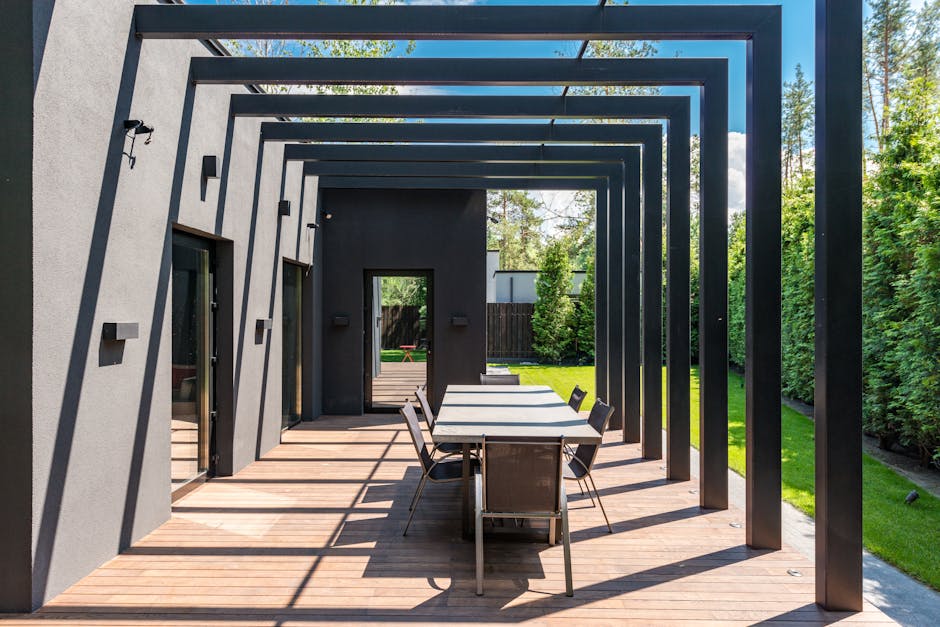How to Design Outdoor Living Spaces That Feel Like a Natural Extension of Your Home
Introduction
Creating an outdoor living space that seamlessly blends with your home’s interior is all about extending your lifestyle beyond the walls. It’s about blurring the lines between indoors and out, creating a harmonious and inviting environment that you’ll love to spend time in. This article will guide you through the key elements of designing an outdoor space that feels like a natural extension of your home, enhancing both its aesthetic appeal and functionality.
Designing Your Outdoor Oasis
Planning and Conceptualization
Before diving into specific design elements, it’s crucial to start with a solid plan. Consider the following:
- Functionality: How do you intend to use the space? Dining, relaxing, entertaining, gardening? Defining the primary function will drive the design choices.
- Space Assessment: Analyze the size, shape, and existing features of your outdoor area. Note sun exposure, prevailing winds, and privacy concerns.
- Style Consistency: Maintain a cohesive aesthetic that complements your home’s architectural style. If your home is modern, extend that modern aesthetic to the outdoor space. If your home is more traditional, reflect that in your outdoor design.
- Budget Allocation: Determine a realistic budget to avoid overspending. Prioritize essential elements and phase the project if needed.
Creating Seamless Transitions
Making the transition from indoors to outdoors feel natural is key. Consider these strategies:
- Matching Flooring: Use similar flooring materials in your indoor and outdoor spaces to visually connect them. Tile that flows from your kitchen to an outdoor patio instantly creates a cohesive feel.
- Color Palette: Extend your interior color scheme to the outdoor space. Use similar colors for furniture cushions, outdoor rugs, and accent pieces.
- Architectural Details: Incorporate architectural elements that echo those found in your home. For example, if your home has exposed brick, consider using brick accents in the outdoor space.
- Large Openings: Install large sliding doors or bi-fold doors to create a wide-open connection between the indoors and outdoors.
Choosing the Right Furniture and Décor
Outdoor furniture should be both stylish and durable, able to withstand the elements. Consider these points:
- Weather-Resistant Materials: Opt for materials like teak, aluminum, wicker (resin wicker is preferable to natural wicker), and concrete, which are designed to withstand the elements.
- Comfort and Functionality: Choose furniture that is comfortable and serves your intended purpose. Dining sets, lounge chairs, sectionals, and outdoor sofas are all popular options.
- Outdoor Rugs: Define different zones within your outdoor space with outdoor rugs. These add comfort and visual appeal.
- Accessorize: Use outdoor-friendly pillows, throws, and decorative items to add personality and style.
Landscaping and Greenery
Plants are essential for creating a natural and inviting outdoor space. Consider these tips:
- Native Plants: Choose plants that are native to your region, as they are more likely to thrive and require less maintenance.
- Vertical Gardening: Maximize space by incorporating vertical gardens on walls or fences.
- Container Gardening: Use potted plants to add pops of color and texture to your outdoor space.
- Trees and Shrubs: Plant trees and shrubs to provide shade, privacy, and visual interest. Consider the mature size of the plants to ensure they don’t overcrowd the space.
Lighting and Ambiance
Proper lighting is crucial for creating a welcoming and functional outdoor space, especially in the evenings.
- Layered Lighting: Use a combination of ambient, task, and accent lighting to create depth and interest.
- String Lights: Add a touch of whimsy and warmth with string lights.
- Pathway Lighting: Illuminate pathways for safety and visual appeal.
- Uplighting: Highlight trees and architectural features with uplighting.
- Fire Features: A fire pit or outdoor fireplace can provide warmth, ambiance, and a focal point for your outdoor space.
Conclusion
By carefully planning and executing these design principles, you can create an outdoor living space that feels like a natural extension of your home, providing a seamless transition between indoors and out. Remember to prioritize functionality, style consistency, and comfort to create a space that you and your family will enjoy for years to come. With a little creativity and effort, you can transform your backyard into a true outdoor oasis.














Post Comment